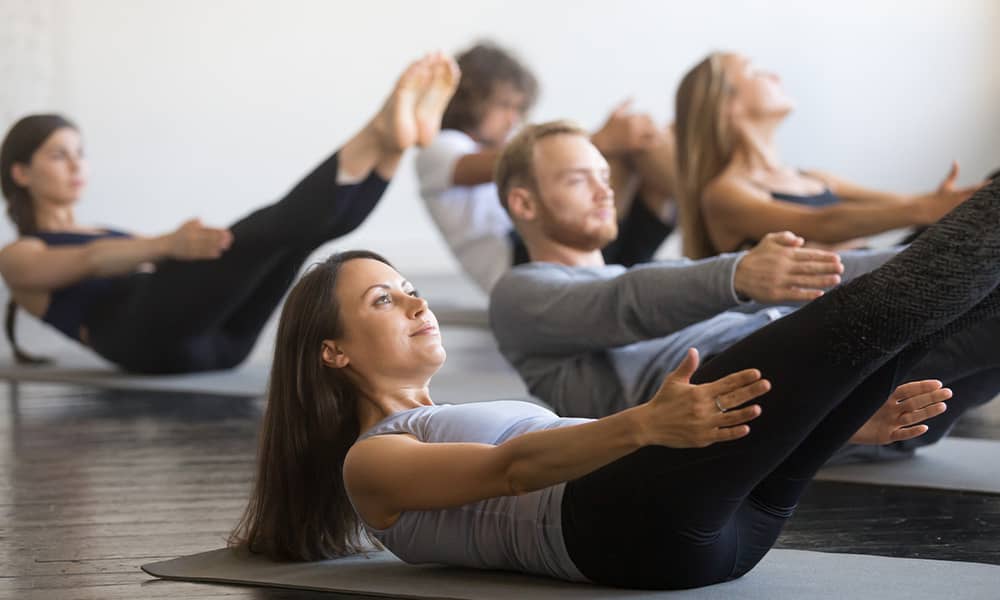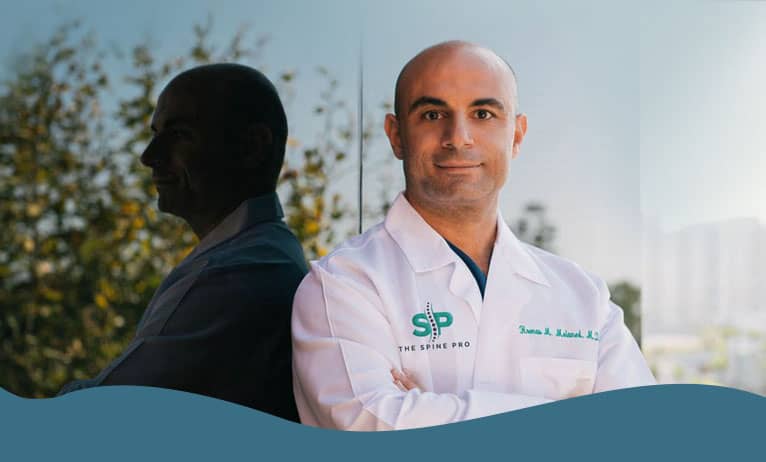Pilates for Back Pain: A Path to a Stronger Core and Healthier Spine
Pilates for back pain isn’t just a fitness trend – it’s a trusted method for improving posture, strengthening your core, and improving spine health. In this guide, we’ll explore how Pilates can benefit your spine and help you achieve a stronger core, which may help reduce and prevent back pain. However, please note that you should always consult with your healthcare provider before beginning any new exercise program.

What is Pilates?
Pilates is a form of exercise that focuses on strengthening the body’s core muscles. Unlike traditional exercises that use weights and machines, Pilates relies on controlled movements using your own body weight as resistance. This makes it a low-impact exercise perfect for those with back pain or injuries. From mat-based exercises to using specialized equipment, Pilates offers a variety of exercises that can be tailored to individual needs and abilities.
Core Strengthening: The Foundation of Pilates for Back Pain
The core muscles are the bedrock of spinal support. These muscles, including the abdominals, back muscles, and pelvic floor, work harmoniously to stabilize and protect the spine. Pilates exercises, with their focus on core engagement, strengthen these key muscles. This reinforcement improves posture and minimizes the risk of back injuries. The following exercises target the core muscles and are essential for maintaining a healthy spine:
- The Hundred: This classic Pilates exercise targets the abdominal muscles while engaging the entire body. It is performed by lying on your back, lifting your head and shoulders off the mat, and pumping your arms up and down while holding a plank position with your legs.
- Mat Swimming: Swimming on a mat involves lying on your stomach and lifting opposite arm and leg pairs to engage the back muscles.
- The Plank: This simple but challenging exercise is excellent for strengthening the entire core. Planks can be done on either forearms or hands and toes, holding a straight body position for 30 seconds to a minute.
Enhancing Posture and Flexibility
Poor posture is a common issue, often leading to back pain and spinal problems. Pilates can address this directly by teaching body awareness and proper alignment. Through consistent practice, individuals learn to maintain a neutral spine position, which is essential for good posture. This alignment reduces strain on the spine and can alleviate pain.
Moreover, flexibility is a key component of spinal health. Pilates exercises gently stretch and elongate the spine, improving flexibility. This increased range of motion allows for more fluid and pain-free movement, contributing to overall spinal health. The exercises below specifically target posture and flexibility:
- Roll Up: This exercise targets the spine’s flexibility by slowly rolling up from a lying position, reaching towards your toes, and gradually rolling back down.
- Chest Lift: This exercise strengthens the core while stretching the spine by lifting your chest off an exercise mat and reaching toward your toes.
- Cat-Cow: This classic yoga pose is modified in Pilates to focus on spinal articulation. It involves moving between an arched-back cow position and a rounded cat position, improving flexibility and mobility in the spine.
- Mermaid: This seated stretch targets the oblique muscles, which are necessary for good posture. It involves sitting on one hip with legs bent, reaching the arm up and over to stretch the side of the body.
Integrating Pilates Into Your Routine
Starting Pilates begins with the crucial step of finding a qualified instructor. This expert guidance is vital in mastering the correct techniques and postures specific to Pilates for spine strengthening. Slowly starting your Pilates regimen is essential, as it allows your body to gradually adapt to new movements, building strength in a way that is gentle yet effective for spinal health. It’s equally important to listen to your body during your Pilates sessions and adjust your exercises if you experience discomfort.
To reap the full benefits of Pilates for back pain, maintaining consistency is key. Setting realistic goals for shorter yet more frequent Pilates sessions can facilitate the integration of this exercise into your daily routine. Moreover, varying your Pilates exercises keeps the routine engaging and challenges different muscle groups, enhancing overall spinal strength and flexibility. Lastly, creating a dedicated space for Pilates at home can serve as a daily motivation, encouraging regular practice. This approach helps make Pilates a delightful and essential part of your routine, significantly improving spine health.
Address Chronic Back Pain with The Spine Pro
At The Spine Pro, we understand the crucial role of a healthy spine in your overall well-being. Our commitment is to offer personalized and effective treatment options tailored to your unique needs. We blend advanced techniques and a deep understanding of spine care to guide you toward improved spine health.
Don’t let spine issues hold you back from living your best life. Embrace the opportunity to enhance your spine health with the guidance and support of The Spine Pro. Book your appointment today and take a significant step toward a stronger, healthier spine.






